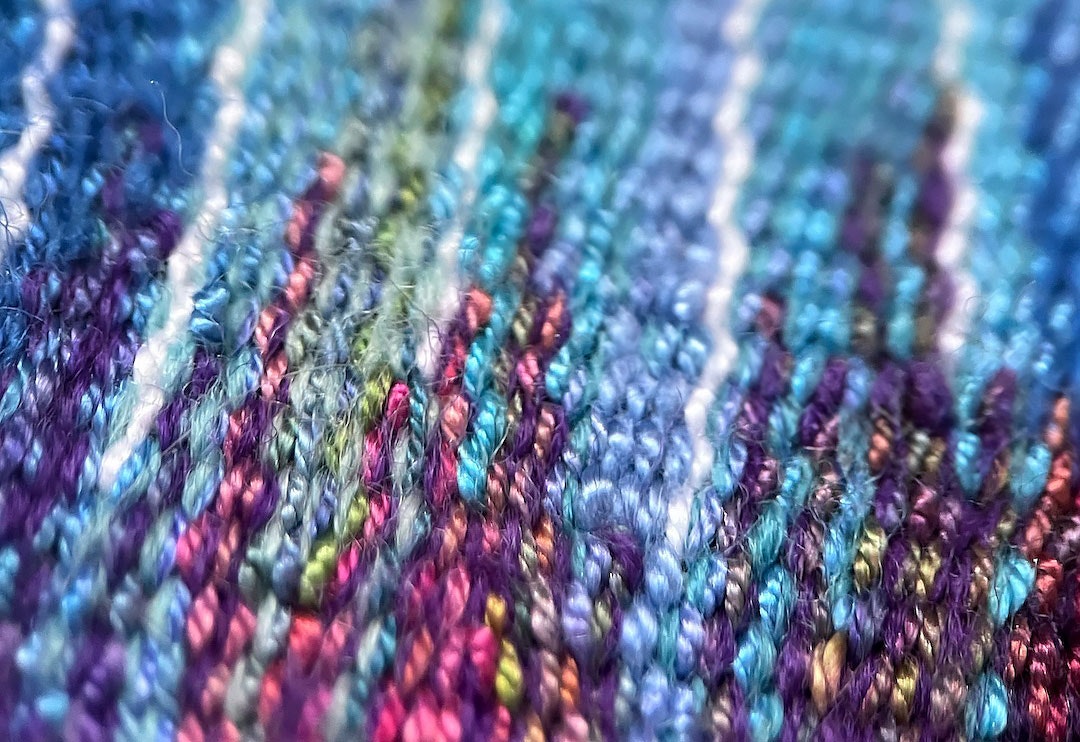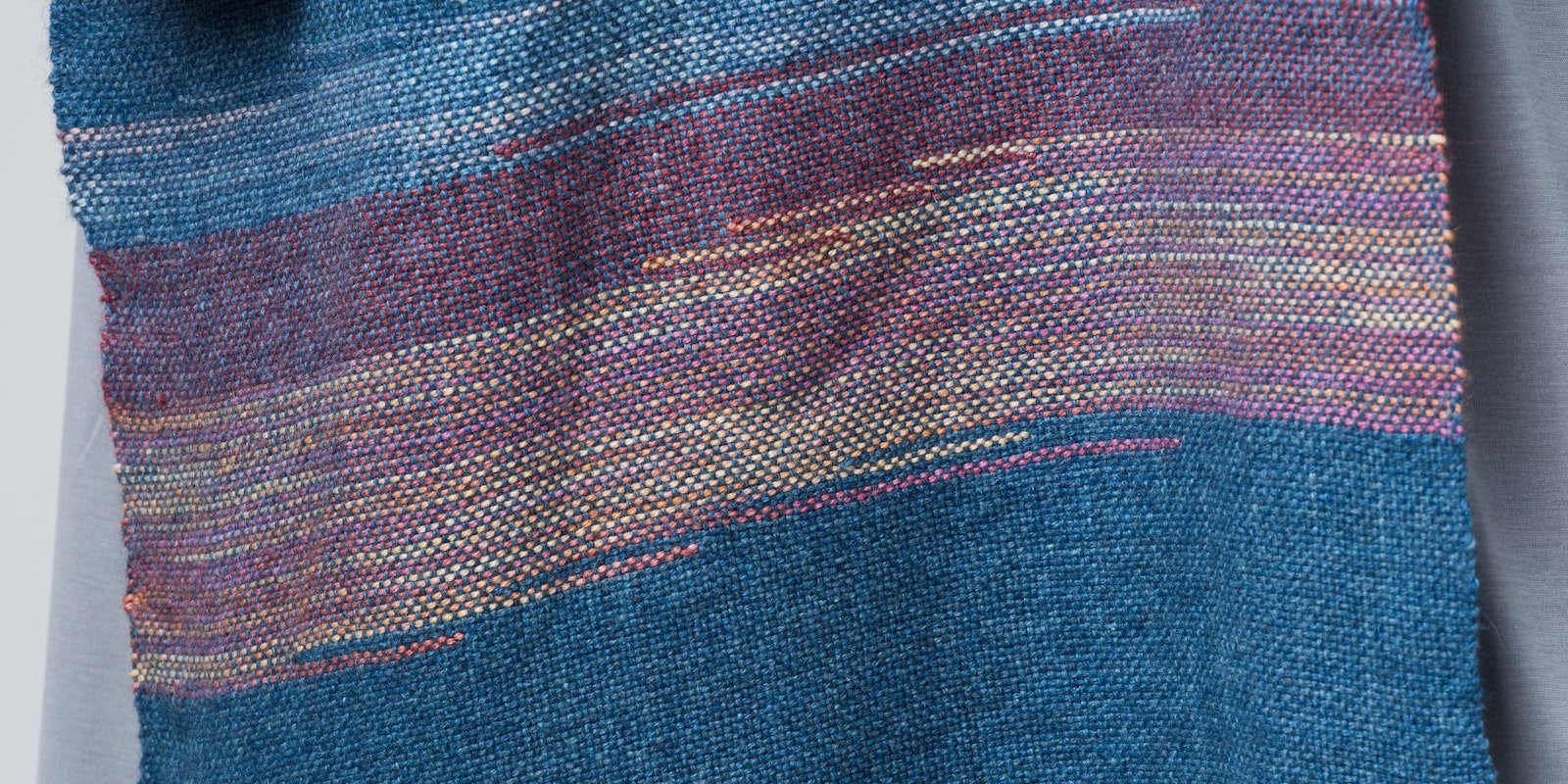Contents

When I first learned about hatching, it was in the context of tapestry weaving, where it’s used for shading and to give pieces a more “painterly” effect. Later, I learned that hatching isn’t just for tapestry weavers. Rigid-heddle weavers and I bet even pin-loom weavers can use this technique to create areas of visual interest and make more organic-looking color changes. Hatching isn’t only versatile; it’s also incredibly easy to incorporate into your designs once you know how to do it, which is where this skill guide on hatching comes into play.
Today’s skill guide will give you a solid foundation. As you read, you’ll learn about:
- The difference between regular and irregular hatching
- How to incorporate hatching into your weaving
- Ideas for an easy sampler
- Projects and more!
Every item we’ve selected for this guide is part of your All Access program and will help you get the most out of your subscription. Check out the Little Looms Library and our video course website for more learning opportunities.
Happy weaving,
Christina
An Introduction to Hatching
Adapted from an article by Elena Kawachi and Claudia Chase
Tapestry weaving, although often pictorial (either abstract or realistic), is quite different from painting. And yet, a tapestry can look very much like a painting if one so desires. In medieval times, painting was considered the poor man’s art, while tapestry was considered an exalted art form because it took so much more time to create. Tapestries were status symbols in the circles of aristocracy. Over time, a variety of techniques evolved to create painterly effects in tapestry.
Tapestries were typically used to insulate castle walls, to cover doorways or windows (castles rarely had glass windows), and for privacy curtains around beds. They were moved from castle to castle and even hung in tents on the battlefield back when kings themselves went to war. Flemish weavers between 1400 and 1530 mastered the ability to mimic a wide variety of surface textures and painterly effects.
One of the primary examples of this is hatching. Imagine applying rouge to a face. It can’t just be a blob of red; it instead must blend into the skin to look natural with the rest of the face. Tapestry weavers needed a method to depict things more realistically: folds in a piece of fabric, skin tone, or clouds in the sky. Solid colors cannot create these effects in tapestry; instead, the weaver must blend the colors to mimic a painterly effect—but how? Unlike paint, you can’t mix two yarns of different colors together to create a new yarn (at least not easily), so techniques were developed to create the illusion of colors being mixed. Tapestry essentially works on a grid, so techniques were developed with a grid in mind.
 Hatching can give weaving a painterly effect. Photo courtesy of Mirrix
Hatching can give weaving a painterly effect. Photo courtesy of Mirrix
Hatching, as with many tapestry techniques, requires that the wefts all travel in opposite directions from one another. Doing so guarantees that the wefts stay in the correct shed.

